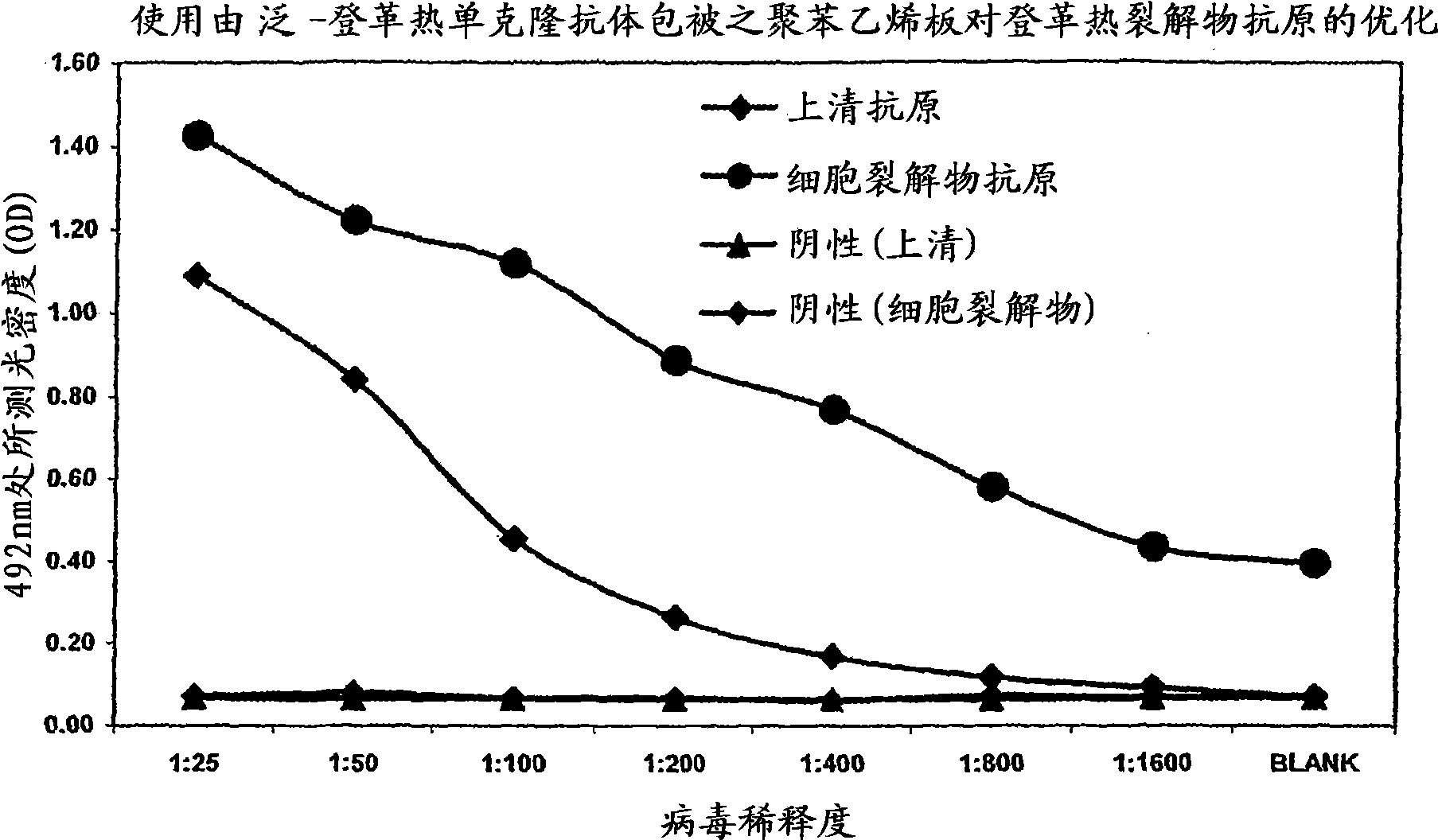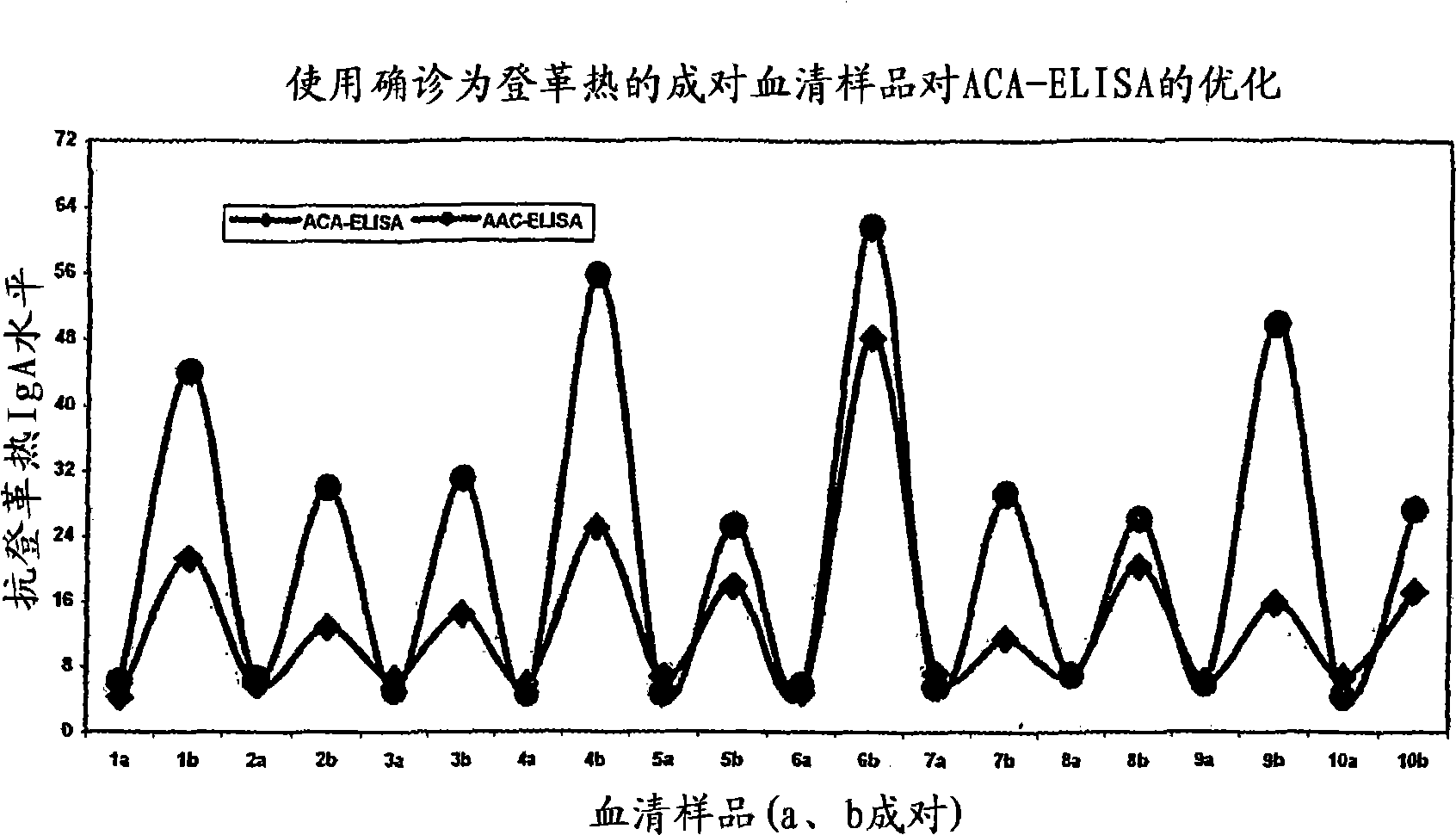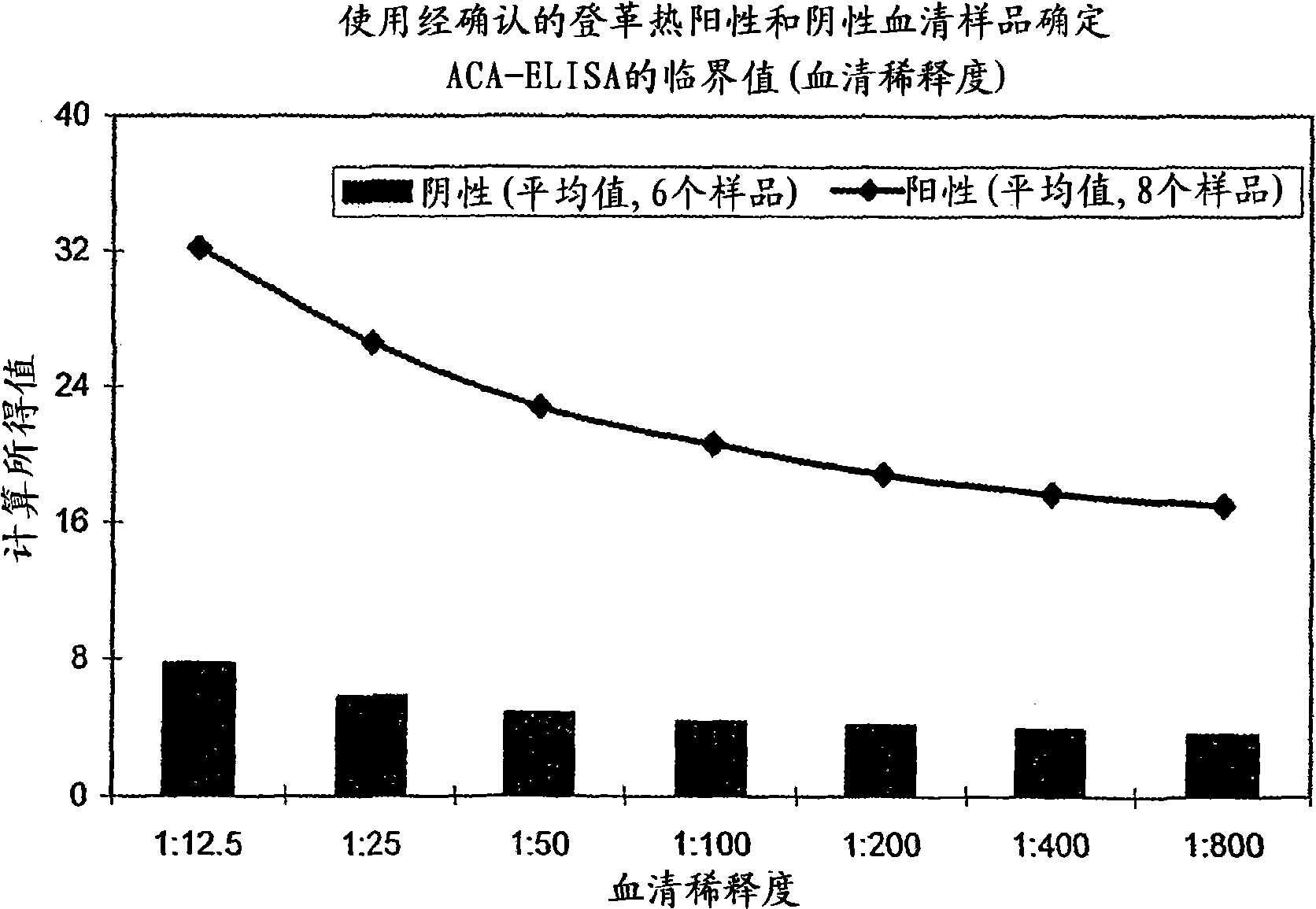Antigen capture anti-dengue IgA ELISA (ACA-ELISA) for the detection of a flavivirus specific antibody
A flavivirus, specific technology, applied in antiviral immunoglobulins, measuring devices, resistance to vector-borne diseases, etc., can solve problems such as low IgM detection sensitivity
- Summary
- Abstract
- Description
- Claims
- Application Information
AI Technical Summary
Problems solved by technology
Method used
Image
Examples
Embodiment 1
[0187] Example 1: Development of anti-dengue IgA using serum (ACA-ELISA)
[0188] a) Preparation of antigens: Lysate dengue virus antigens against all four dengue virus serotypes were prepared according to the method described by Cardosa et al. (2002). Briefly, dengue virus (5m.o.i.) was cultured in C6 / 36 cells, depending on the development of the cytopathic effect and the serotype of the virus, in virus maintenance medium containing 2% fetal bovine serum and incubated for 4- 5 days. The medium was decanted, the culture flask containing the infected cells was rinsed 4 times with PBS, treated with 1 ml hypotonic buffer containing 1% trix100 for 1 hour, and finally centrifuged at 14000 rpm for 10 minutes. The supernatant was collected and aliquoted into eppendorf tubes in 250 μl, and stored at -70°C for future use.
[0189] b) Serum samples: A total of 292 dengue PCR-confirmed serum samples from 3 groups were used as positive samples. 182 dengue PCR-negative patient serum sam...
Embodiment 3
[0199] Example 3: Comparison of Analytical Sensitivity of Two IgA Assays:
[0200] The sensitivity levels of the two anti-dengue IgA assays (AAC-ELISA and ACA-ELISA) were further analyzed using dengue positive IgA serum samples in 2 different diluents (eg dengue negative serum and dilution buffer). Figure 4 showed that in AAC-ELISA, the sensitivity of sera with high levels of anti-dengue IgA when diluted in negative sera was 32-fold lower than in dilution buffer, due to suppression by high levels of non-dengue-specific IgA in the serum diluent 43.71%~79.79% ( Figure 4 ).
[0201] On the other hand, in ACA-ELISA, the detection level of dengue-specific IgA was the same in both diluents (negative serum and diluent buffer), and the suppression of non-dengue-specific IgA present in the serum diluent was negligible is -11.08%~-61.76% ( Figure 4 ).
Embodiment 4
[0202] Example 4: Sensitivity and specificity of ACA-ELISA
[0203] This example was carried out using 296 dengue-confirmed and 182 dengue-negative serum samples collected during the acute and convalescent phases. Among the confirmed dengue samples, 96 samples were collected from days 1-3 of febrile onset, 97 samples were collected from days 3-7, and 102 samples were collected from days 10-37 of febrile onset. Serum samples from 182 patients were collected from dengue PCR-negative patients who developed fever during sample collection. The sensitivity and specificity of ACA- and AAC-ELISA are shown in Table 1 and Table 2.
[0204] Table 1. Sensitivity and specificity of serum ACA-ELISA
[0205]
[0206] Table 2. Sensitivity and specificity showing AAC-ELISA
[0207]
PUM
| Property | Measurement | Unit |
|---|---|---|
| diameter | aaaaa | aaaaa |
Abstract
Description
Claims
Application Information
 Login to View More
Login to View More - R&D
- Intellectual Property
- Life Sciences
- Materials
- Tech Scout
- Unparalleled Data Quality
- Higher Quality Content
- 60% Fewer Hallucinations
Browse by: Latest US Patents, China's latest patents, Technical Efficacy Thesaurus, Application Domain, Technology Topic, Popular Technical Reports.
© 2025 PatSnap. All rights reserved.Legal|Privacy policy|Modern Slavery Act Transparency Statement|Sitemap|About US| Contact US: help@patsnap.com



